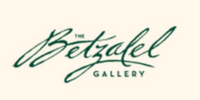Itshak Holtz is arguably the most influential contemporary Jewish genre artist today. His iconic renderings of Jewish life and rituals are instantly recognizable and his paintings are avidly sought after by discerning collectors worldwide. However, to simply categorize Holtz as an artist who paints Jewish subjects is to overlook the greater significance of his work.
To Holtz, a Jewish scene is not merely a scene but a vision of possibilities. It is not the subject matter that makes his paintings work; it is his interpre- tation of the subject that lifts it out of the ordi- nary. Holtz views life through a spiritual lens, and only by recognizing the integral role that his deep faith plays in his work, can one fully appreciate the scope of his art. He views his talents as a gift from heaven, and as such, he sees it as his life's calling to depict the beauty and meaning of reli- gious Jewish life.
As the renowned artist Howard Pyle once said, "It is easy enough to learn to draw; it is very difficult to learn to think." Unlike many artists who often face great difficulty when attempting to infuse deep emotion, sympathy, and sincerity into their work, Holtz's art exudes these elusive qualities. He goes beyond simple representations of Jewish life; his portrayals of shoemakers and scribes depict the essence of his subjects with empathy and affection. "You have to live that religious life to fully capture it on canvas," he explains.
However, unlike Howard Pyle would have us be- lieve, to learn to draw like Itshak Holtz is no simple task. Holtz's mastery of all the technical aspects of his craft, whether painting or drawing, in oil, wa- tercolor, ink or charcoal, is exceptional. With his innate understanding of the handling properties inherent in each medium, he plays up their strengths to great effect in his work.
A fine example of his mastery of the media of felt- tip pen and marker is Deep in Thought. In this work, Holtz has adapted the trois crayon tech- nique and has succeeded, with deft line work and to learn to think." Unlike many artists who often face great difficulty when attempting to infuse deep emotion, sympathy, and sincerity into their work, Holtz's art exudes these elusive qualities. He goes beyond simple representations of Jewish life; his portrayals of shoemakers and scribes depict the essence of his subjects with empathy and affection. "You have to live that religious life to fully capture it on canvas," he explains.
However, unlike Howard Pyle would have us be- lieve, to learn to draw like Itshak Holtz is no simple task. Holtz's mastery of all the technical aspects of his craft, whether painting or drawing, in oil, watercolor, ink or charcoal, is exceptional. With his innate understanding of the handling properties inherent in each medium, he plays up their strengths to great effect in his work.
A fine example of his mastery of the media of felt- tip pen and marker is Deep in Thought. In this work, Holtz has adapted the trois crayon technique and has succeeded, with deft line work and washes of color, to characterize the weather beaten face and furrowed brow of a man deep in thought. The informal composition has an imme- diacy that encourages contemplation. What is he thinking of, one wonders, observing the hooded eyes and pensive expression of the model. In Studying, however, Holtz uses vibrant, translucent layers of watercolor to achieve an entirely differ- ent mood. The painting of a rabbi, deeply en- grossed in study, is awash in light and glows with spirituality. The energetic marker lines add life and movement to what, in lesser hands, would be a static composition.
Drawings have always been an important part of Holtz's oeuvre. "I love drawing. It is my medium," he says. He values the immediacy of a sketch and relies on drawing to captures the spontaneity of a vignette or likeness. These first impressions often later become the basis for full-blown paintings. Nonetheless, whether fully developed or loosely rendered, his superbly executed drawings impact the viewer as powerfully as his paintings do. In Re- joicing, a quick study, it is difficult not to get swept up in the circle of dancers, so contagious is the en- ergy captured by the vigorous line work. Holtz uti- lizes a more painterly approach in Keeping Up With the News. The beautiful shading and judi- cious lines of this highly finished drawing create form, giving the figure of the seated gentleman great presence and character.
Holtz's compositional skills have always been greatly admired by his peers. "On painting expeditions with fellow artists," Holtz recalls, "I was al- ways the one who chose what to paint." He has the uncanny ability to see the artistic potential in the most mundane settings. The crooked streets of Jerusalem and Tzefas, the interiors of synagogues and shops, old men and women, all are magically transformed by his brush. Even the ramshackle façade of Jerusalem House, which ordinarily would not elicit a second glance from most passersby, suddenly has artistic merit when seen through his loving eyes.
Throughout his career, Holtz's style has swung from realism to impressionism to its current blend of the two techniques. Yet, the clarity of his vision has remained constant. His art is influenced by the world around him, yet born of his soul, a marriage of technical brilliance and emotional intelligence that gives his work a timelessness that will no doubt continue to inspire generations to come.
In honor of its inauguration, The Betzalel Gallery is pleased to present this collection of Itshak Holtz's masterful drawings and watercolors. As many are perhaps more familiar with Mr. Holtz's oil paintings, this exhibition reveals another di- mension to Holtz's art and offers an opportunity for collectors and admirers of Jewish fine art to gain a greater appreciation for Itshak Holtz's tremendous virtuosity with all media.
Shmuel Pultman
Director, The Betzalel Gallery


0 comments